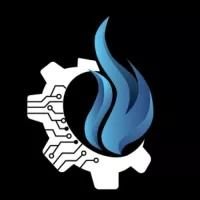Introduction
This article outlines the full-stack web developer role, detailing core duties, technical responsibilities, and essential requirements. It covers building and deploying full-stack web applications, working across frontend and backend development, and collaborating with AI, data, and design teams on live projects. You’ll also see how tools like Git, Docker, and CI/CD support secure, reliable delivery of responsive applications.
Core Roles and Cross-Team Collaboration
Build and deploy full-stack web applications. This means owning both the frontend and backend lifecycle: implementing user-facing interfaces and deploying the combined application to production. Deployment work links directly to the use of tools such as Git, Docker, and CI/CD to move code safely from development into live environments.
Work on both frontend and backend development. Frontend tasks focus on creating clean, user-friendly web pages using HTML, CSS, and basic web design principles; backend tasks focus on designing scalable backend APIs that serve data and business logic.
Collaborate with AI, data, and design teams on live projects. Collaboration requires integrating inputs from AI and data teams (data flows and API endpoints) and from design teams (UI mockups and Figma assets), ensuring that interfaces and APIs work together in production.
Technical Responsibilities and Required Skills
This section expands each responsibility and maps them to the required skills:
- Develop responsive UI and scalable backend APIs:
Responsive UI means layouts and pages adapt across devices while remaining usable and accessible. Scalable backend APIs are designed to handle increasing loads and provide consistent data to the frontend and integrated systems.
- Design and manage databases (SQL & NoSQL):
Database work includes selecting appropriate data models, defining schemas or document structures, and managing data integrity so that both UI and backend can retrieve and store information reliably.
- Create clean, user-friendly web pages using HTML, CSS, and basic web design principles:
Pages should be structured with semantic HTML, styled with CSS, and follow basic design principles to ensure clarity, usability, and maintainability.
- Integrate APIs and ensure smooth data flow:
Integration involves connecting frontend and backend through well-defined API contracts, handling requests and responses, and ensuring data moves predictably between systems.
- Optimize app performance, security, and reliability:
Optimization covers tuning both frontend and backend for efficient operation; security includes applying best practices to protect data and access; reliability focuses on keeping applications available and consistent for end users.
- Use Git, Docker, and CI/CD for development:
These tools support version control, environment consistency, and automated build/deploy pipelines that streamline development and delivery.
- Troubleshoot, test, and maintain existing applications:
Ongoing maintenance involves diagnosing issues, applying fixes, testing changes, and keeping applications up-to-date and functional on live projects.
Requirements mapped to responsibilities
- Good problem-solving skills and a learning mindset: Essential for troubleshooting, adapting to project needs, and collaborating across teams.
- Proficient in Python, HTML, CSS, JavaScript, and basic web design: These languages and skills enable development across the stack—from server-side logic to user-facing pages.
- Familiarity with Figma for UI design: Helps translate design assets into functional interfaces and maintain alignment with design teams.
- Basic understanding of cloud platforms (AWS): Supports deployment and operational considerations when moving applications to cloud environments.
Conclusion
In summary, the full-stack developer role demands building and deploying full-stack web applications, crafting responsive UIs and scalable backend APIs, designing SQL and NoSQL databases, integrating APIs, and maintaining performance, security, and reliability. Proficiency in Python, HTML, CSS, JavaScript, familiarity with Figma, Git, Docker, CI/CD, and a basic understanding of AWS plus a learning mindset ensure success on live, collaborative projects.



